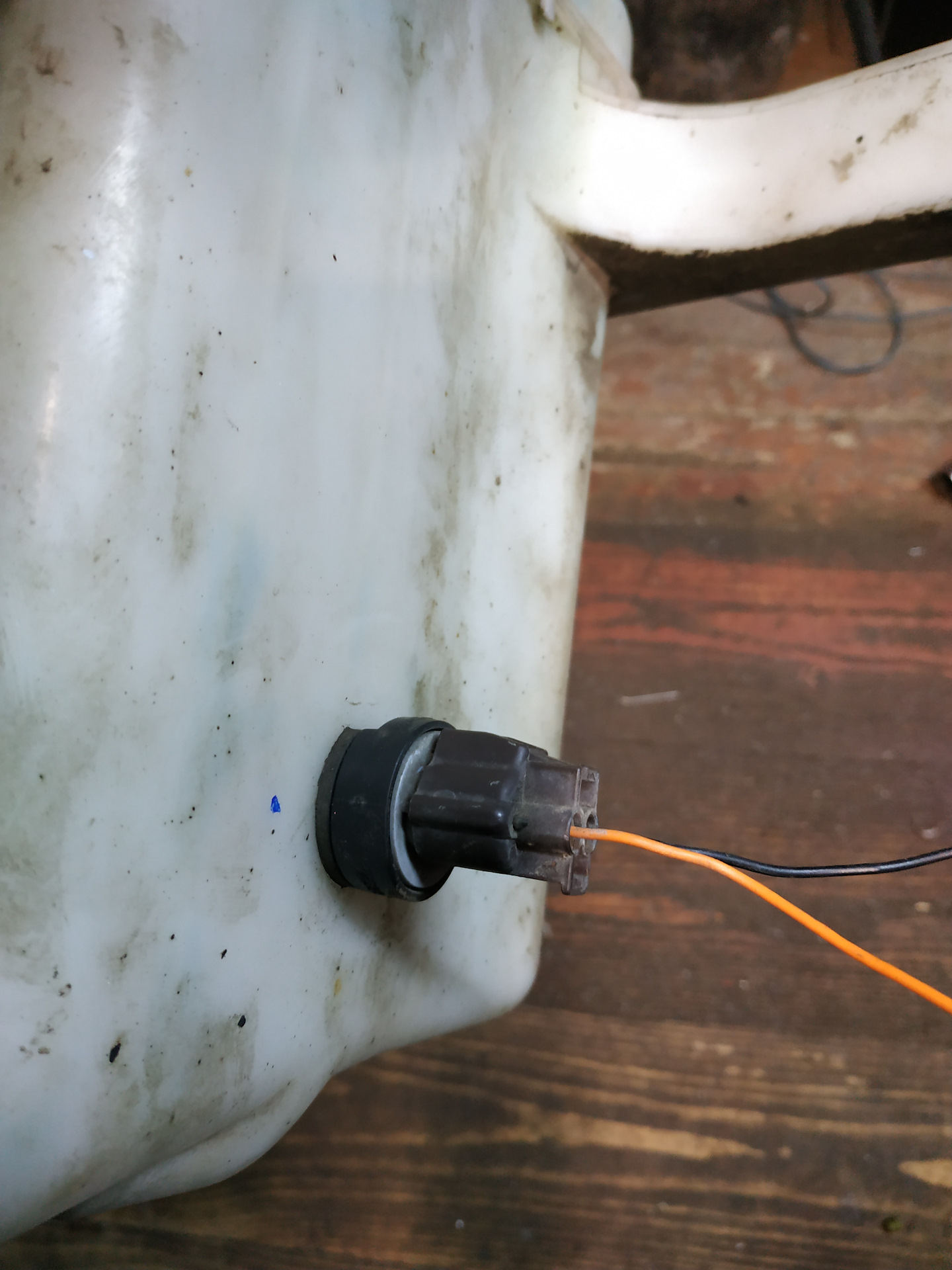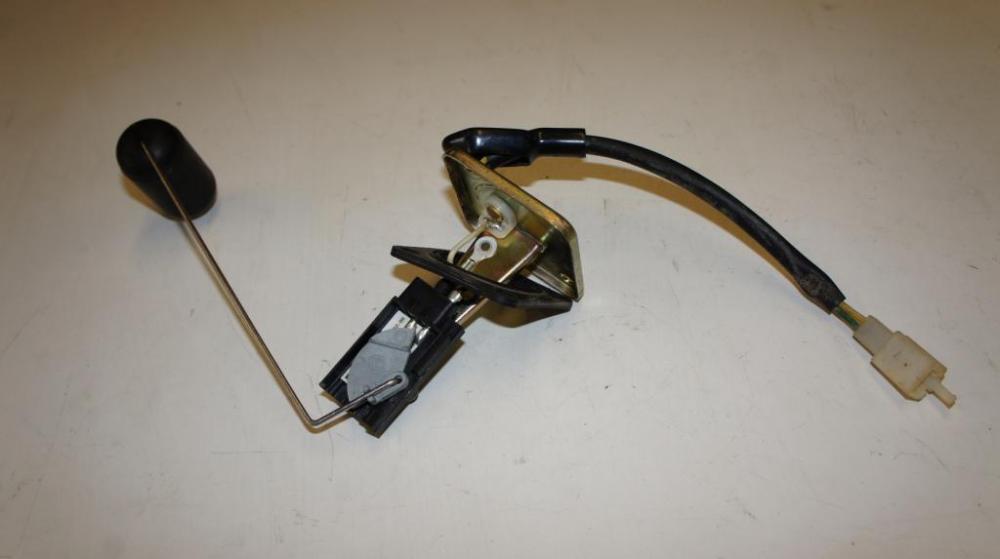
Coolant level sensor: device, repair, replacement, how to do it yourself
Content
Popular antifreeze level sensors for Stralis, TGS, Transporter turbo-injection vehicles are reliable. Breakdowns are usually associated with a power outage and are easily fixed. A device with a broken case tightness cannot be repaired and must be replaced. It is necessary to measure antifreeze in the tank only when the engine is cold. The surface of the refrigerant must be located between the marks on the tank wall.
Overheating of the car engine can lead to serious consequences. To warn of a breakdown, there are antifreeze level and coolant temperature sensors on the expansion tank. The signals of these devices control the parameters of the coolant and warn of an emergency.
Where is the coolant level indicator
The device controls the presence of coolant in the expansion tank of the car. When the tank is empty, the device gives an alarm - the indicator of the cooling system lights up. The coolant level sensor is located in the buffer plastic tank. The part plays an important role in protecting the car engine from overheating and breakdown.
Popular antifreeze level sensors for Stralis, TGS, Transporter turbo-injection vehicles are reliable. Breakdowns are usually associated with a power outage and are easily fixed. A device with a broken case tightness cannot be repaired and must be replaced. It is necessary to measure antifreeze in the tank only when the engine is cold. The surface of the refrigerant must be located between the marks on the tank wall.
Sensor device
An electromechanical device determines the adequacy of the coolant volume in the vehicle's cooling system.
The main types of coolant volume control:
- The reed indicator measures the position of the device's mirror using a magnetic float. At the lower point, the electrical circuit is closed and the alarm is turned on.
- Electrode devices measure conductivity and control coolant volume.
- The ultrasonic coolant level sensor works by monitoring the height of the coolant mirror. And in case of deviation from the norm, it gives a signal about a malfunction.
- Hydrostatic sensors respond to changes in coolant pressure at the bottom of the tank.
Cars are usually equipped with antifreeze level sensors of the "reed switch" type. The reliable design of the device allows a long time to work in a chemically aggressive environment.

Coolant level sensor
Essential elements
The coolant level sensor device is located inside a plastic "canister" of antifreeze. The device is included in the electrical circuit of the car and sends an alarm to the panel. The main element of the device is a sealed reed indicator. The coolant volume is measured by a float moving along a vertical rod.
The principle of operation of the coolant level sensor is in the change in the magnetic field from the height of the coolant mirror in the tank. The contacts are controlled by springs that close the circuit when stretched. The circuit also has an alarm in the form of a light bulb.
Principle of operation
Protecting the machine's motor from overheating is a critical task, so the coolant in the buffer tank is constantly monitored.
The principles by which the coolant level sensor works in the system:
- creation of an electromagnetic field in the hermetic case of the device;
- change in current resistance in the winding when moving the annular float;
- closing of contacts by springs in the absence of coolant in the expansion tank;
- transmission of an alarm to the screen.
Cars are more often equipped with reed switches because of their reliability.
Level sensor repair
The device has a non-separable hermetic design. Any mechanical damage to the case leads to a malfunction of the device. Usually in this case it is required to change the indicator to a new one. The cost of the device is much less than repairing a broken car engine. Replacing the coolant level sensor is simple, you can do the work yourself.

Level sensor repair
If the old device does not respond to a change in coolant volume, then you need to inspect the body of the device in good light for cracks and chips. This is followed by checking the integrity of the wires and external contacts. If no damage was found during the inspection of the main elements of the coolant level sensor, then the internal mechanism is most likely broken. In this case, the device cannot be repaired and must be replaced with a new one, taking into account the model of the car.
Diagnostics
The level indicator should be checked after the coolant has cooled down. The hot coolant expands, so it occupies a larger volume in the tank. If visually the liquid mirror is below the “minimum” mark, and the signal light is not on, then the control device may be buggy.
A sign that the system is not cooling is a noisy engine running with the cooling fan running frequently. It is necessary to make a diagnosis of the electrical circuit, if necessary, eliminate breaks and clean the contacts from oxides. If the old device still does not work, then install a new one.
How to replace
The cause of the car engine exceeding the operating temperature may be a broken coolant control indicator. A faulty device does not respond to the absence of antifreeze or antifreeze in the expansion tank. First of all, check the electrical wiring and the device case for external damage.
If there is no deviation, then a new sensor must be installed. The car is placed in a dry room with good lighting. Next, take off the battery terminal, remove the wires from the plug, disconnect the device from the tank. A new coolant control device is assembled in the reverse order.
Device installation diagram
Typically, the liquid level sensor has a standard output for connection to the vehicle's electrical circuit. It is not required to release the expansion tank from the coolant. After connecting the coolant level sensor to the circuit, you need to connect the battery. Add antifreeze to the position between the marks on the side wall of the container. Then start the car and make sure that there is no signal about the lack of coolant.
DIY level sensor
Older car models do not have coolant volume measuring devices. Therefore, there is a risk of engine damage if coolant is lost from the system while driving. The solution to this problem is to make a do-it-yourself coolant level sensor.
A simple device circuit is electrode, when two conductors are in a conductive liquid and open the circuit when the tank is empty. To send an alarm to the network, connect an incandescent lamp or a bell.
A more complex version of the antifreeze level sensor is done by hand on microcircuits, with several indicators connected to one controller. But it is better to entrust this work to the car service masters.